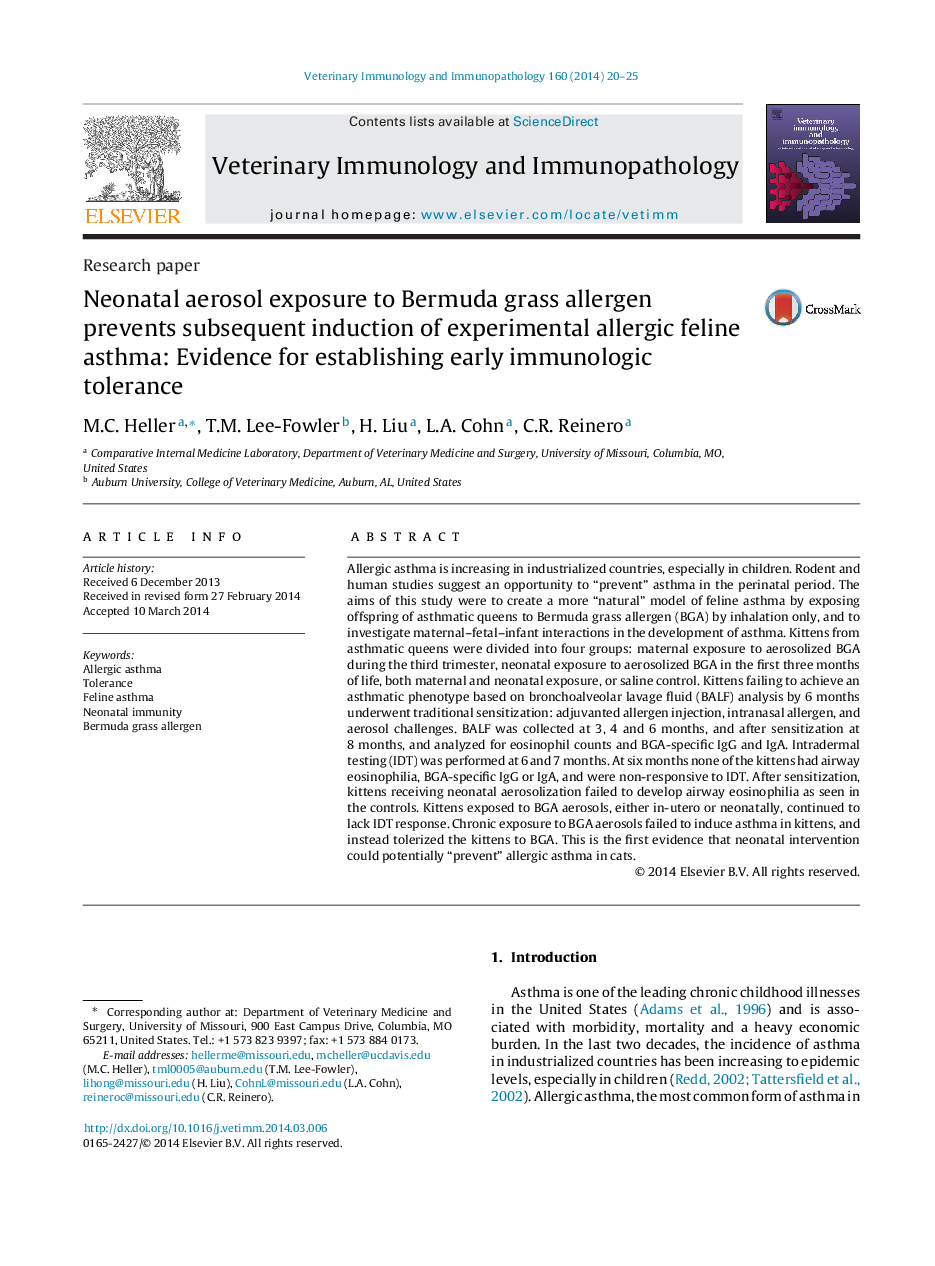| Article ID | Journal | Published Year | Pages | File Type |
|---|---|---|---|---|
| 5796760 | Veterinary Immunology and Immunopathology | 2014 | 6 Pages |
Allergic asthma is increasing in industrialized countries, especially in children. Rodent and human studies suggest an opportunity to “prevent” asthma in the perinatal period. The aims of this study were to create a more “natural” model of feline asthma by exposing offspring of asthmatic queens to Bermuda grass allergen (BGA) by inhalation only, and to investigate maternal-fetal-infant interactions in the development of asthma. Kittens from asthmatic queens were divided into four groups: maternal exposure to aerosolized BGA during the third trimester, neonatal exposure to aerosolized BGA in the first three months of life, both maternal and neonatal exposure, or saline control. Kittens failing to achieve an asthmatic phenotype based on bronchoalveolar lavage fluid (BALF) analysis by 6 months underwent traditional sensitization: adjuvanted allergen injection, intranasal allergen, and aerosol challenges. BALF was collected at 3, 4 and 6 months, and after sensitization at 8 months, and analyzed for eosinophil counts and BGA-specific IgG and IgA. Intradermal testing (IDT) was performed at 6 and 7 months. At six months none of the kittens had airway eosinophilia, BGA-specific IgG or IgA, and were non-responsive to IDT. After sensitization, kittens receiving neonatal aerosolization failed to develop airway eosinophilia as seen in the controls. Kittens exposed to BGA aerosols, either in-utero or neonatally, continued to lack IDT response. Chronic exposure to BGA aerosols failed to induce asthma in kittens, and instead tolerized the kittens to BGA. This is the first evidence that neonatal intervention could potentially “prevent” allergic asthma in cats.
